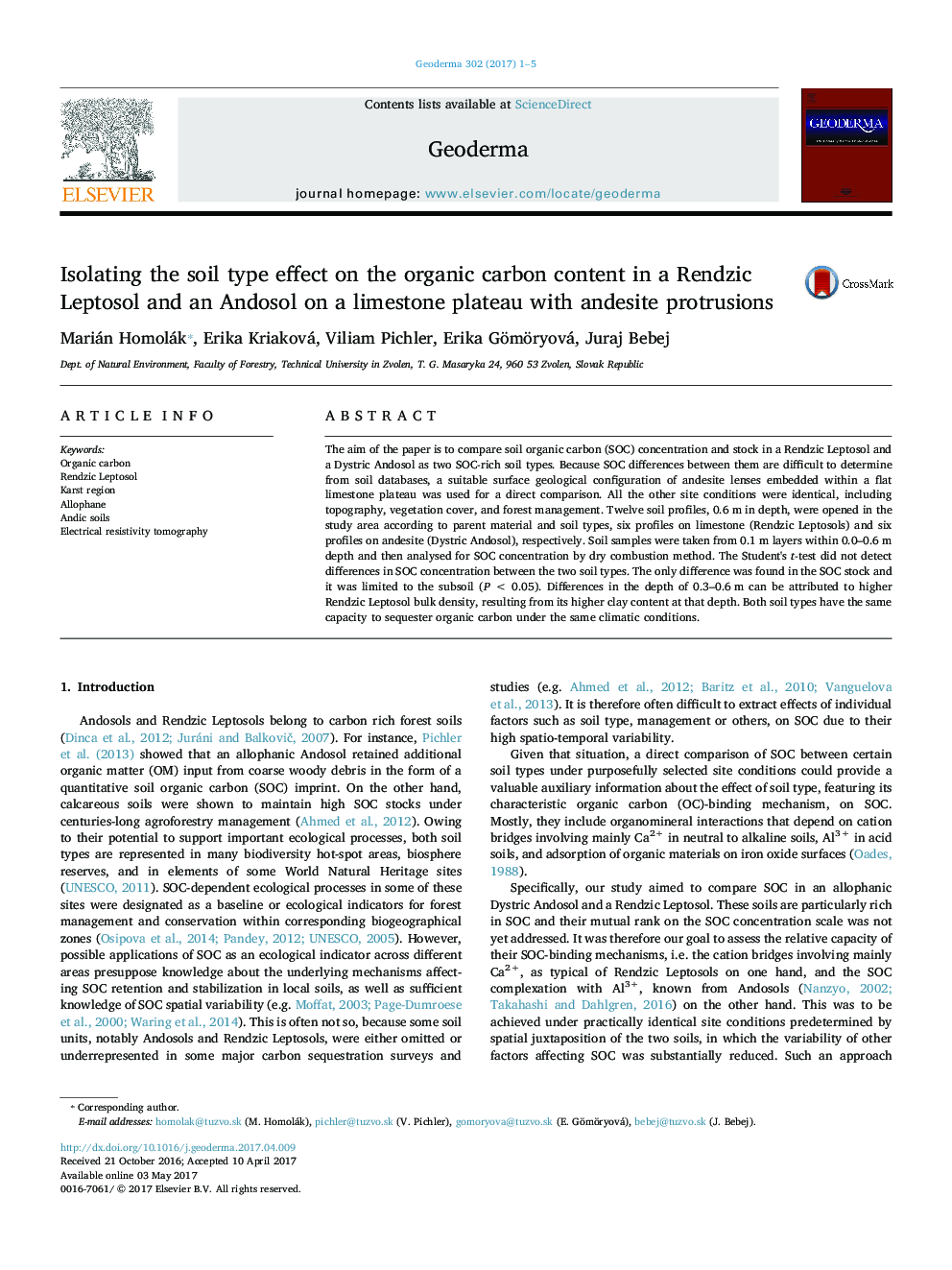| Article ID | Journal | Published Year | Pages | File Type |
|---|---|---|---|---|
| 5770255 | Geoderma | 2017 | 5 Pages |
â¢SOC concentration and stock were compared in two soil types in same natural condition.â¢No difference in SOC concentration was found between soil types.â¢Similar capacity of allophanic and carbonate soils for binding organic matterâ¢Differences in the SOC can be attributed to different bulk density and clay content.
The aim of the paper is to compare soil organic carbon (SOC) concentration and stock in a Rendzic Leptosol and a Dystric Andosol as two SOC-rich soil types. Because SOC differences between them are difficult to determine from soil databases, a suitable surface geological configuration of andesite lenses embedded within a flat limestone plateau was used for a direct comparison. All the other site conditions were identical, including topography, vegetation cover, and forest management. Twelve soil profiles, 0.6Â m in depth, were opened in the study area according to parent material and soil types, six profiles on limestone (Rendzic Leptosols) and six profiles on andesite (Dystric Andosol), respectively. Soil samples were taken from 0.1Â m layers within 0.0-0.6Â m depth and then analysed for SOC concentration by dry combustion method. The Student's t-test did not detect differences in SOC concentration between the two soil types. The only difference was found in the SOC stock and it was limited to the subsoil (PÂ <Â 0.05). Differences in the depth of 0.3-0.6Â m can be attributed to higher Rendzic Leptosol bulk density, resulting from its higher clay content at that depth. Both soil types have the same capacity to sequester organic carbon under the same climatic conditions.
